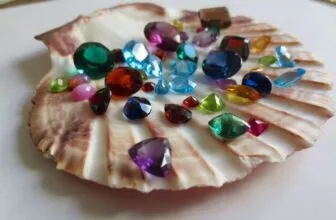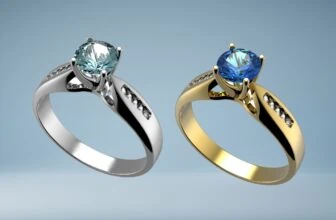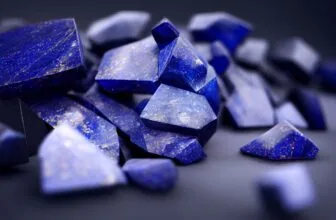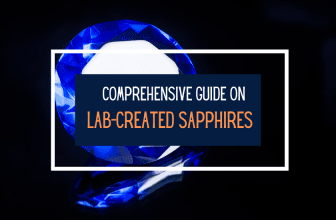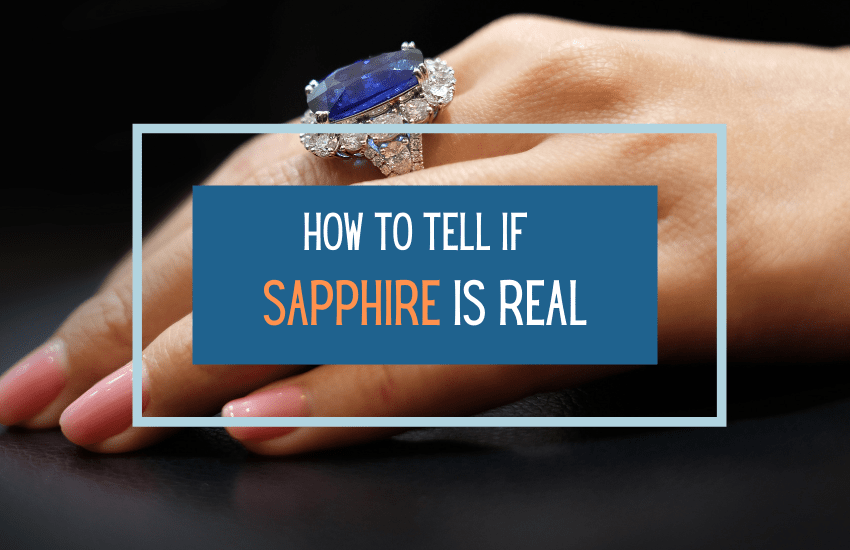
Table of Contents
Sapphires are among the most highly coveted and valuable of all colored gemstones. Demand for sapphires is always on the increase. When shopping for a sapphire, you may come across the terms natural, synthetic, and imitation. It goes without saying that of the three, natural sapphires are the most desirable and have the highest value.
While there’s nothing wrong in buying an imitation or synthetic sapphire, what matters is that the retailer provides accurate information about the origin of the stone and that you are charged the appropriate price for the stone.
To clarify any misconceptions of the differences in natural, synthetic, and imitation sapphire, here’s a quick look at these three categories and how to tell them apart.
Natural Sapphire
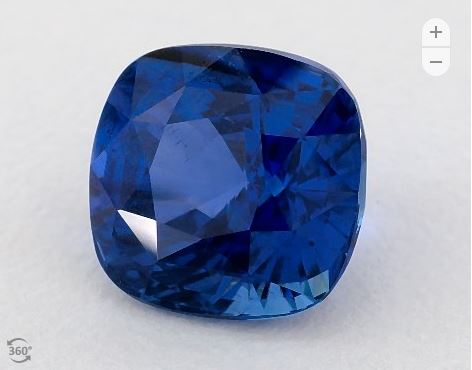
Natural sapphires are formed in nature over several thousands of years and are extracted through intense mining processes.
These sapphires are made of the mineral corundum and gem quality stones are relatively rare.
However, finding untreated natural sapphires is difficult. Almost all natural sapphires on the market are heat treated to enhance or stabilize their color.
Synthetic Sapphire
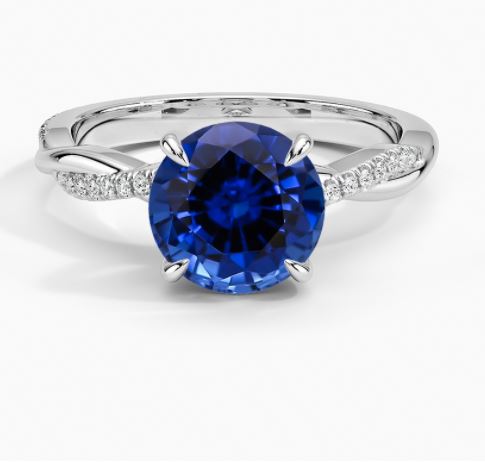
Synthetic sapphires are created by humans in labs using advanced technological processes. They are identical chemically, structurally, and optically to natural rubies. These can be created within a matter of weeks and are more affordable than their natural counterparts.
Synthetic sapphires aren’t fake, as they have the same chemical composition as natural sapphires. The only difference is in how they were created. It is a cost-effective option without the need to compromise on quality. Some shoppers tend to prefer lab-created sapphires as they have a lower impact on the earth.
Imitation Sapphires
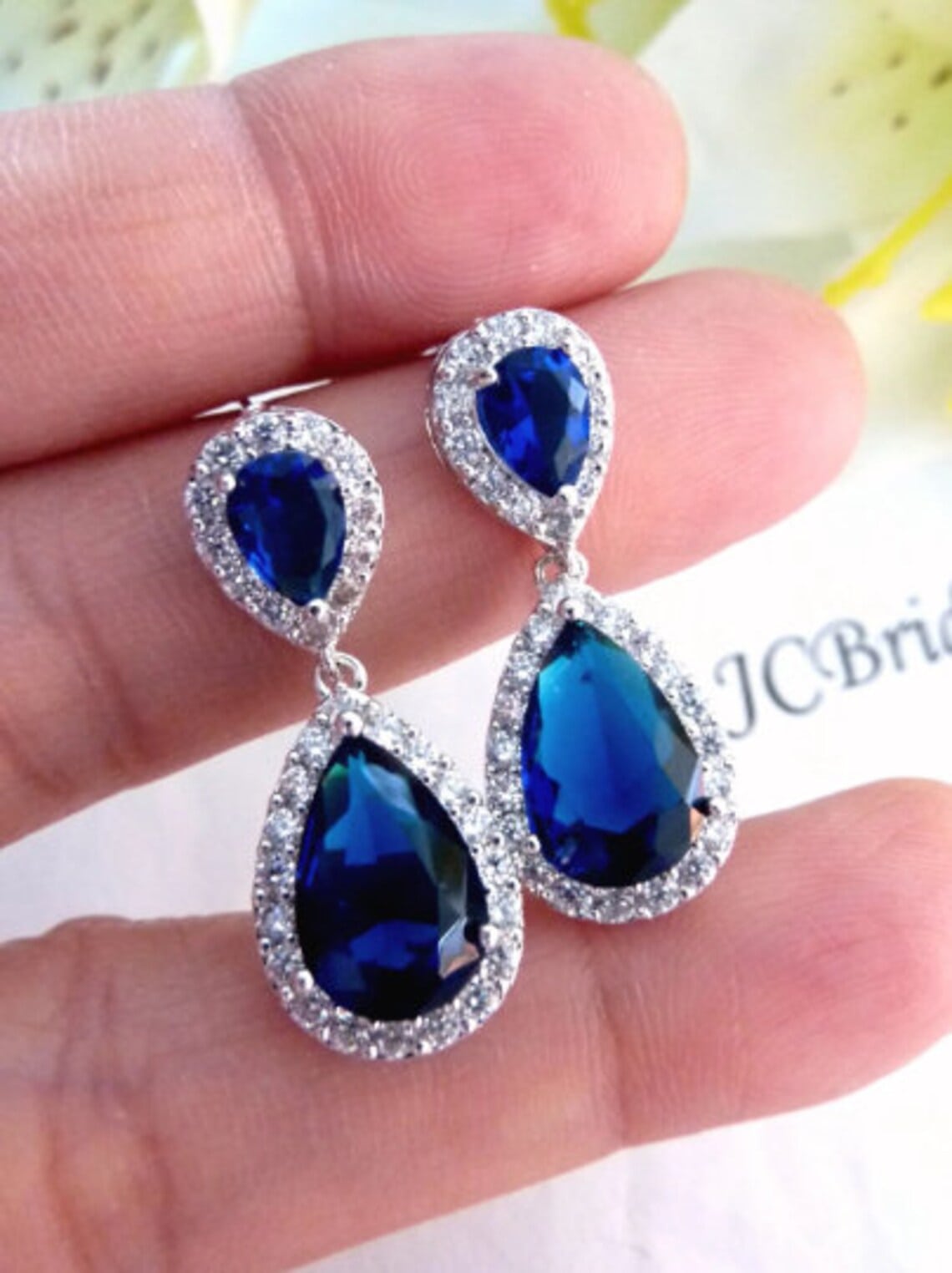
An imitation sapphire is a stone that looks like a sapphire but is different in every other way.
These are often less durable and much less valuable. Some common substances used in place of sapphires are blue colored glass, cubic zirconia and blue spinel. Tanzanite, which is a valuable and rare gemstone, has also been used as imitation sapphire.
Something else to watch out for are composite sapphires also called lead glass filled sapphires, which are created by combining low grade corundum with glass. The low-grade corundum is poor quality sapphires that cannot be sold for use in jewelry.
Glass is used to fill up the cracks and spaces and hold the entire structure together. The resulting gemstone looks exactly like a sapphire but has very poor durability.
Testing For Genuine Sapphire
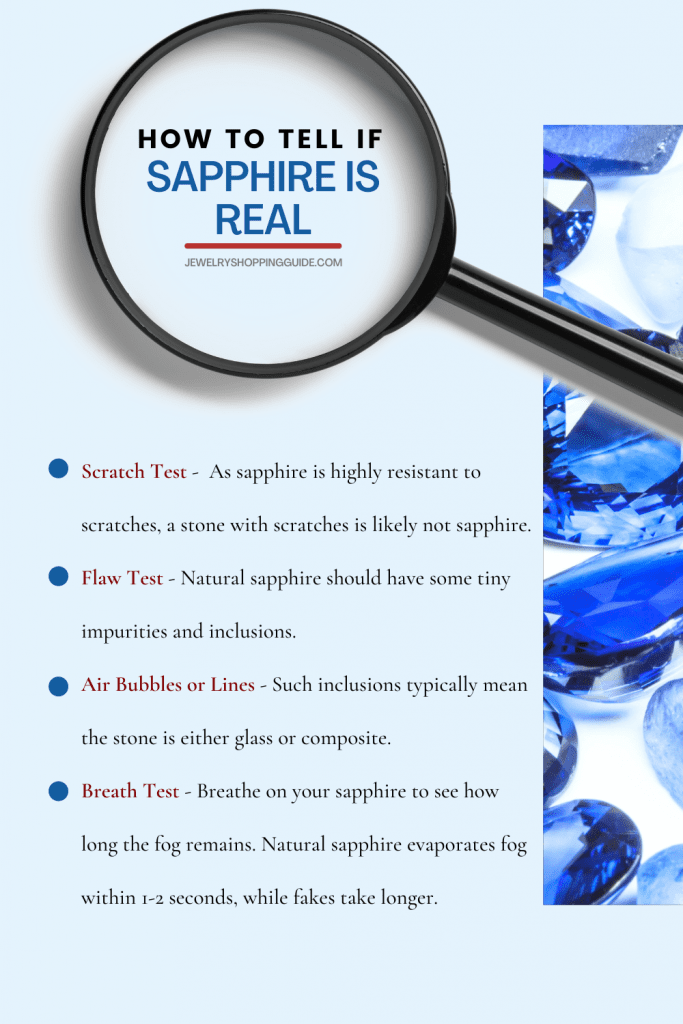
While there’s nothing wrong with buying any of the above three options, what’s essential is that you’re not being ripped off on the price and quality of the stone.
In order to identify whether your sapphire is natural, synthetic or imitation, here are some ways to test your stone.
1. Check for Scratches
Sapphire is one of the most durable gemstones used for jewelry, second to only diamonds. It has a hardness rating of 9 on the Mohs scale. This means that any substance with an equal or lower hardness rating cannot scratch a sapphire.
To put that into perspective, glass is only 5.5, spinel is 7.5-8 and cubic zirconia is 8. Ste
If you’re sapphire shows scratches or nicks, the chances of it being fake are high. Try scratching the surface of the stone with a key or coin. If this leaves scratch marks, the stone is probably glass. A real sapphire cannot be scratched in this way.
2. Look for Flaws
Natural gemstones generally tend to have inclusions. As the gemstone forms in nature, miniscule traces of foreign matter are bound to get into the stone. This is one key distinguishing feature between natural and synthetic sapphires.
Use a magnifying glass or a jeweler’s loupe to check for impurities and flaws within your sapphire. Check for small flaws or specks within the stone. These are an indication that your stone is real.
Lab-created sapphires are generally flawless in their composition. The inclusions cannot be replicated in a lab so if your stone is flawless, there’s a high chance it is synthetic.
3. Bubble and Line Inclusions
If you see little air bubbles trapped within the stone, there is a high chance that it is glass or composite sapphire. Make sure to view the stone from all angles as some air bubbles may only be visible from certain angles.
Also check if there are any thready white interconnecting lines within the stone. This could be an indication of composite sapphire.
4. The Breath Test
This is a basic test, but it can give you an indication as to the integrity of your sapphire. Take your sapphire and breathe on it slowly and deeply. Then check to see how long it takes for the fog to evaporate.
If the sapphire is real, the fog should disappear very quickly, in about a second or two. This is because sapphires are naturally good at conducting heat. A fake stone will take about 5 seconds or more to evaporate.
5. Take it to an Expert
If the perceived worth of the stone warrants it, it is best to take your sapphire to an expert gemologist to determine if it is authentic or fake.
Once the sapphire has been evaluated using gemological tools, you will be provided with a certificate of appraisal. This report will detail all the specifications of your stone as well as its origin and any treatments that may have been done to it.
A certified sapphire is also easier to resell as the certificate warrants for its authenticity.
Shopping Smart – Where and How
Whether you decide to shop online or at a physical store, ensure that you are shopping from a reputable and registered retailer.
If shopping online, check for images and/or video of the actual stone. Ask about any treatments that may have been done on the stone. Your vendor should disclose this information to you.
Most vendors provide a certificate of authenticity for their gemstones. Some vendors will have the certificate easily accessible, listed along with images of the sapphire.
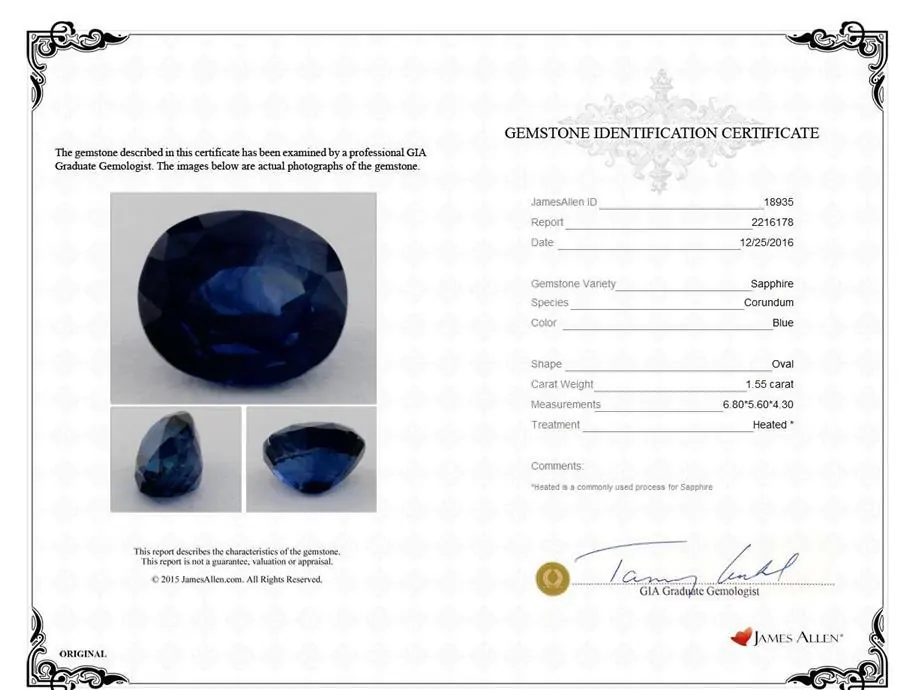
This is an example of certificate of authenticity from James Allen, detailing all the specifications of the stone including heat treatments.
There’s nothing wrong with purchasing an imitation or synthetic sapphire – as long as you know the stone’s authenticity.
If you decide to purchase your sapphire online, we recommend the following sites:
- James Allen – One of the best when it comes to engagement rings and diamonds, James Allen’s sapphire selection is second to none. These come in blue, pink, yellow, and green varieties at reasonable price points.
- Blue Nile – Known for their massive inventory of diamonds, Blue Nile also offers a variety of gemstones. For competitively priced loose sapphire gemstones and jewelry, check out Blue Nile’s extensive selection.
- Brilliant Earth – Known for quality craftsmanship and high-quality natural and synthetic sapphire jewelry and loose gemstones, Brilliant Earth also has excellent after sales policies and customer service. However, the price points can be higher than some of the other stores listed here.
- Etsy – Etsy has a wide range of sapphire jewelry, from authentic antiques to inexpensive dyed sapphire jewelry. This gives you a wide range of options at various price points. Again, do your due diligence, and ensure that the store is reputable. Check out our guide on how to shop on Etsy if you’d like some pointers.
FAQs About Sapphire
Common blue sapphire imitations include glass, cubic zirconia, and blue spinel. Sometimes, tanzanite is passed off as sapphire, although it’s a valuable gemstone in its own right.
Yes, almost every sapphire on the market is heat treated or thermally enhanced. This is an accepted treatment for these stones.
An estimate is 95% of all sapphires are heat treated.
Yes, because it means the color and transparency of the stone is completely natural. However, it depends on the quality of the sapphire.
Short answer – it’s very difficult to. Only a gemologist with special tools can ensure that the sapphire is lab-created or natural.
No, they’re made of corundum as well and are very similar to natural sapphires. However, a sapphire with no inclusions (when viewed under a magnifier), very vivid colors, a lower price point, and a crystal-like transparency are often indicators of lab-creation.
Wrapping Up
Purchasing a big-ticket item, like a valuable sapphire, can be daunting, especially if you’re doing it online. Always purchase from a reputable retailer, and ensure that there are solid after sales and returns policies in place.


